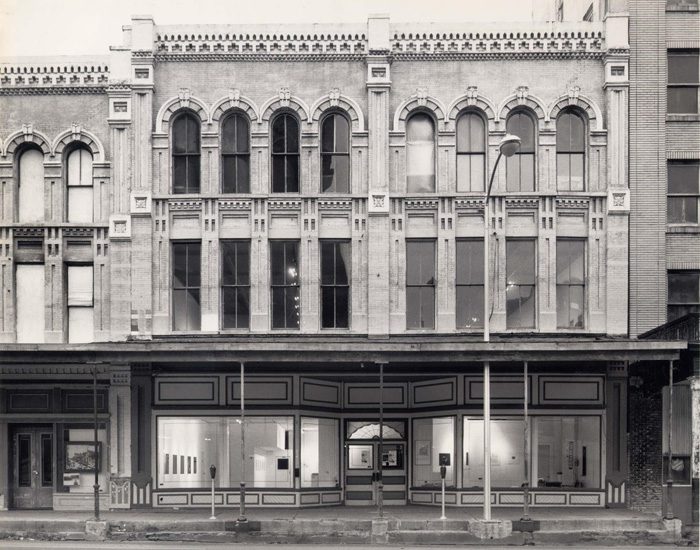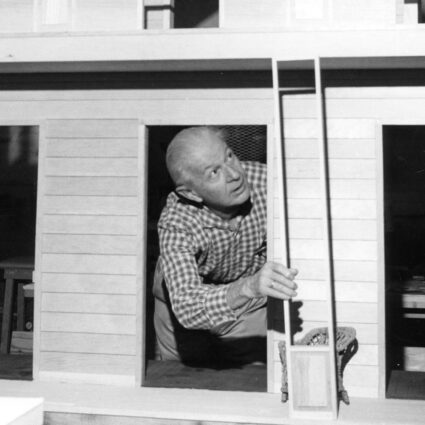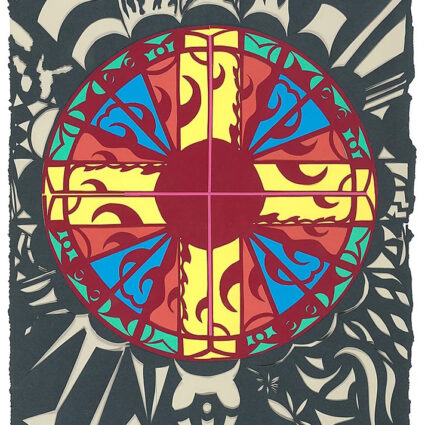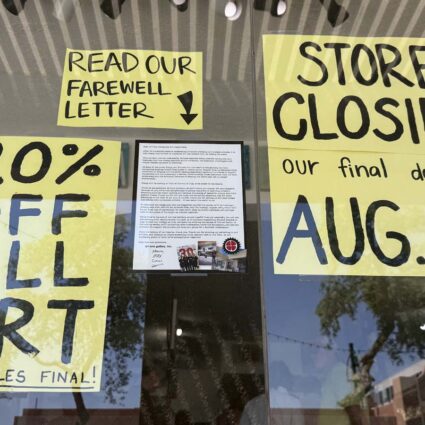A book series diving into historical and current alternative art establishments in major stateside cities visits Texas in Impractical Spaces: Houston. Here are five current H-Town favorites from the book.
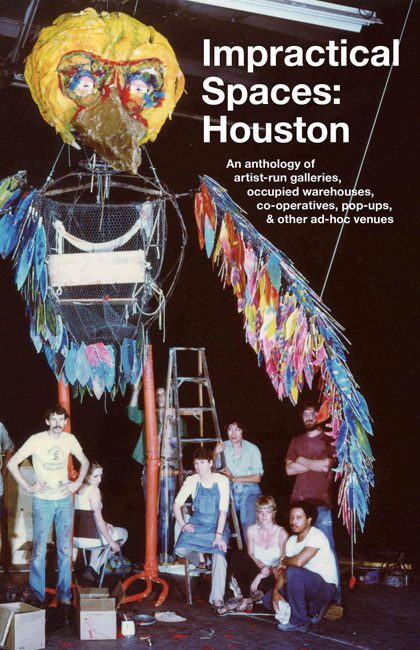
With world-class art institutions such as the Museum of Fine Arts, Houston, the Menil Collection, and the Contemporary Arts Museum Houston, Space City has firmly established its position as a Texas mecca for art. However, alongside the growth of these larger institutions is a rich history of innovators inaugurating organizations in alternative spaces.
The newly released book Impractical Spaces: Houston, edited by Houston historian Pete Gershon, features articles and interviews discussing origins, meaningful projects, and people involved in forming fifty-five ad-hoc establishments and art institutions. While some of the places were only open for a couple of years, many more have continued to prosper and flourish in Houston’s burgeoning art scene.
Here are five thriving H-Town art locales that visitors can add to their Clutch City art itinerary. After reading this article, check out the Impractical Spaces: Houston book release event from 2 to 4 pm Sunday, April 24, 2022, at The Orange Show Center for Visionary Art, 2401 Munger Street in Houston.
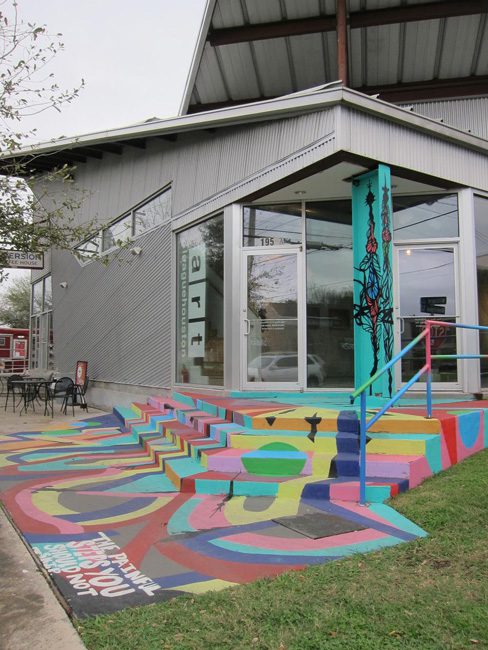
Art League Houston (founded in 1948)
Art League Houston was founded as a members’ space, exhibiting contemporary artwork and offering art classes. As membership swelled, the need for a larger venue led to its relocation and permanent fixture in the Montrose neighborhood in 1968. Throughout the decades, the League continued to focus on its education outreach, including a “Healing Arts” program which provided free art classes to students living with HIV/AIDS in the early 1990s. Art League Houston updated their building and facilities throughout the early 2000s, reopening its doors in 2007 with the resources to extend its educational programming to underserved school districts in the Houston area. Today, the League continues to grow its studio art class offerings, exhibit Texas artists, and honor the careers of Texas artists in its annual Lifetime Achievement Awards.

Lawndale Art Center (formerly Lawndale Annex) (founded in 1979)
The Lawndale Art Center has established itself as a formidable figure on the contemporary Houston arts scene. It originated out of necessity for studios for University of Houston students after their art and architecture building caught fire in 1978. Along with exhibitions organized by Houston artist James Surls and Bert L. Long, Jr., the Annex hosted punk bands like Dead Kennedys and Black Flag in the early 1980s. The organization moved to its current location in the early ‘90s and became the Lawndale Art Center. During MaryRoss Taylor’s tenure as executive director—she’s known for owning a feminist bookstore and bringing Judy Chicago’s The Dinner Party to the University of Houston-Clear Lake—she organized a Houston visit for the Guerilla Girls. Lawndale continues to work in the spirit of its legacy, exhibiting works by emerging and mid-career artists balanced with programming, including an art lending library, music performances, and book readings.
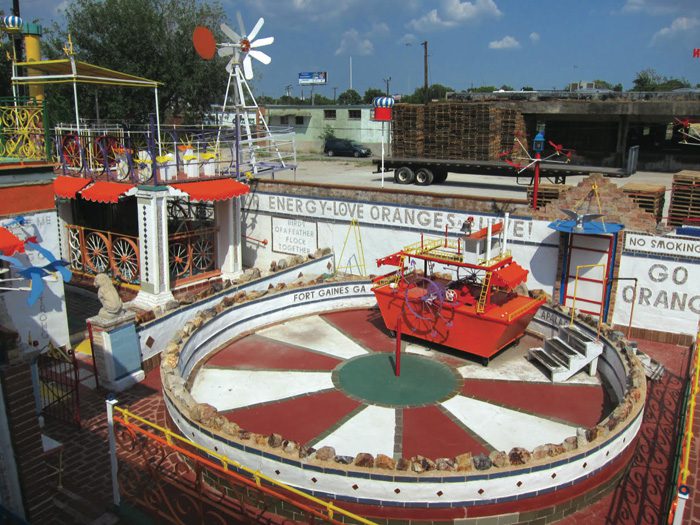
The Orange Show Center for Visionary Art (opened to the public in 1982)
Many of the organizations listed in Impractical Spaces were founded by individuals or collectives due to their affiliations with various institutions. The Orange Show Center for Visionary Art is an exception—retired mail carrier Jefferson Davis McKissack created the space. Inspired by music, tap dancing, and stage performance, McKissack transformed the sprawling 3,000-square-foot environment with fun fair colors and features, including a circus ring and towers from salvaged metal and other materials. A foundation was created to preserve the legacy of the venue (which reopened to the public two years after McKissack’s 1980 death) and to develop community programming to educate the public about visionary art. The inaugural edition of the annual Art Car Parade premiered in 1988, an April tradition that features jalopies repurposed into animals and other outrageous forms.
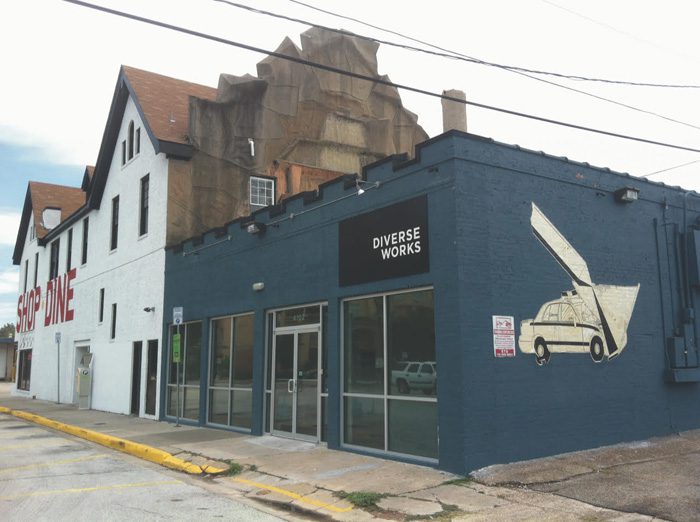
DiverseWorks (founded in 1982)
DiverseWorks, initially founded in 1982 by a group of artists seeking a space downtown that could show experimental and groundbreaking art from young makers, has hopped all over Houston. In the ‘90s, the organization moved to a former 1920s cotton warehouse off of East Freeway, then moved to Fannin Street in Midtown in 2012 before settling in the Midtown Arts and Theatre Center Houston (MATCH). The goals of DiverseWorks have changed since its initial creation, with more emphasis on networking with other Houston-based arts organizations and outreach to communities outside the traditional art districts. This includes its Project Freeway initiative that empowers community-based artists in the development of socially-engaged projects in underserved Houston neighborhoods.
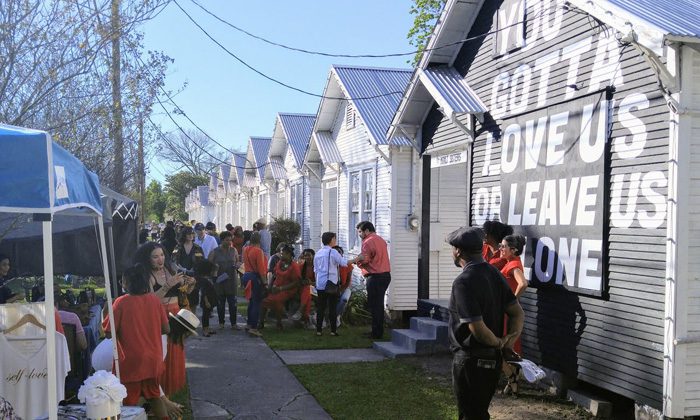
Project Row Houses (founded in 1993)
In 1993, a group of Houston artists led by Rick Lowe established Project Row Houses in the historic Third Ward neighborhood. Beyond creating an artist and exhibition space, Lowe and his comrades sought to provide an emancipatory social practice, including programs for children and young mothers. Project Row Houses continues to serve as a model nationally and internationally as an arts institution that functions to serve its community and its needs, focusing on making an immediate impact on the lives of Third Ward residents.
